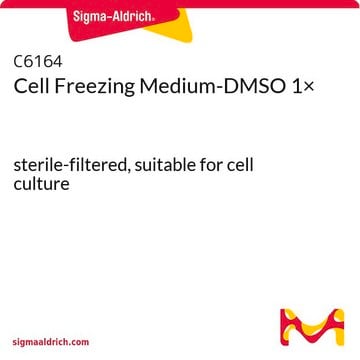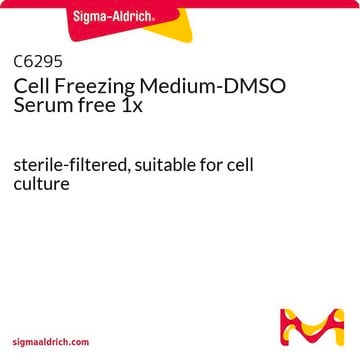SCC210
UFH-001 Human Breast Cancer Cell Line
Human
Synonyme(s) :
CAIX-positive breast cancer cells, triple negative breast cancer cells
About This Item
Produits recommandés
product name
UFH-001 Human Breast Cancer Cell Line, The UFH-001 triple negative CAIX+ human breast cancer cell line is suitable as a model for studying the mechanisms of triple negative breast cancer progression, metastasis and migration.
Source biologique
human
Technique(s)
cell culture | mammalian: suitable
Catégories apparentées
Description générale
Source:
UFH-001 cells are derived from MCF-10A cells, a spontaneously immortalized breast cancer epithelial cell line originating from breast tissue of a healthy female patient . UFH-001 cells were sorted for CAIX expression by flow cytometry .
Description de la lignée cellulaire
Application
Cancer
Qualité
• Cells are tested negative for HPV-16, HPV-18, Hepatitis A, B, C, and HIV-1 & 2 viruses by PCR.
• Cells are verified to be of human origin and negative for inter-species contamination from rat, mouse, chinese hamster, Golden Syrian hamster, and non-human primate (NHP) as assessed by a Contamination CLEAR panel by Charles River Animal Diagnostic Services.
• Cells are negative for mycoplasma contamination.
• Each lot of cells is genotyped by STR analysis to verify the unique identity of the cell line.
Stockage et stabilité
Clause de non-responsabilité
Code de la classe de stockage
10 - Combustible liquids
Classe de danger pour l'eau (WGK)
WGK 2
Point d'éclair (°F)
Not applicable
Point d'éclair (°C)
Not applicable
Certificats d'analyse (COA)
Recherchez un Certificats d'analyse (COA) en saisissant le numéro de lot du produit. Les numéros de lot figurent sur l'étiquette du produit après les mots "Lot" ou "Batch".
Déjà en possession de ce produit ?
Retrouvez la documentation relative aux produits que vous avez récemment achetés dans la Bibliothèque de documents.
Notre équipe de scientifiques dispose d'une expérience dans tous les secteurs de la recherche, notamment en sciences de la vie, science des matériaux, synthèse chimique, chromatographie, analyse et dans de nombreux autres domaines..
Contacter notre Service technique





